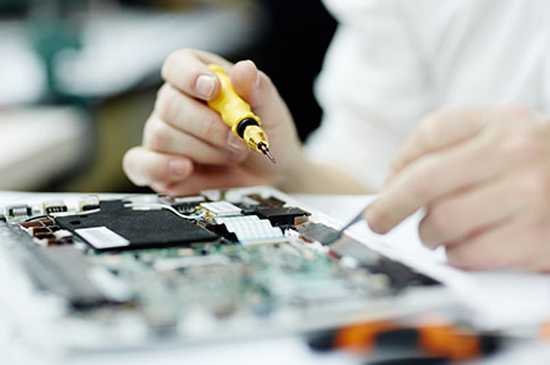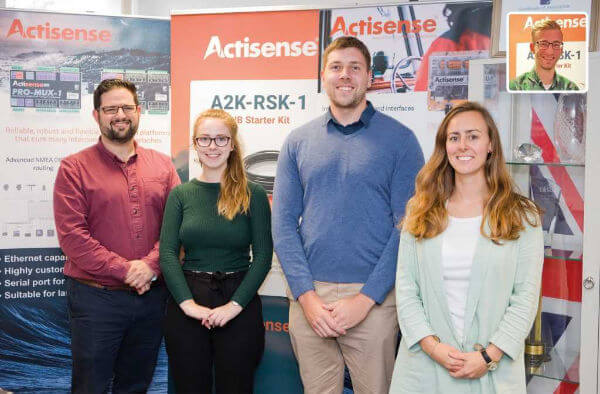-
Hottest Articles
- RINA Type Approval - What is it?
- What Actisense device do I need?
- Which NGW-1 should you choose?
- What is ISO-Drive?
- Choosing the Right NGW-1
- Converting Multiple NMEA 0183 Talkers to NMEA 2000
- Converting DSC/DSE with the NGW-1
- NMEA 2000 Device Prioritisation
- Converting Engine Data from NMEA 2000 to NMEA 0183
-
Software
-
- Can I use the SDK with Mac or Linux systems?
- What are the ActisenseComms Wrappers for?
- What is provided in the ActisenseComms SDK package?
- How can I get my software NMEA 2000 approved?
- How can using Actisense NMEA Reader help me? (NMEA Reader)
- What costs can a developer save? (Web-links)
- Who is already using the ActisenseComms SDK? (“Software Compatibility List”)
- How can I gain access to the ActisenseComms SDK?
- Can I use the SDK with Mac or Linux systems?
- What are the ActisenseComms Wrappers for?
- What is provided in the ActisenseComms SDK package?
- How can I get my software NMEA 2000 approved?
- How can using Actisense NMEA Reader help me? (NMEA Reader)
- What costs can a developer save? (Web-links)
- Who is already using the ActisenseComms SDK? (“Software Compatibility List”)
- How can I gain access to the ActisenseComms SDK?
- Linux USB Drivers
- Mouse Cursor Jumping Around Erratically
- Windows 7 Support
- USB Device Not Working
-
NMEA 0183
-
- Using USB/VCP Drivers with MAC OS10.15 (Catalina)
- How waterproof is the USG-2?
- What features exist on the USG-2 to aid fault finding?
- Can I connect more than one Talker (transmitting device) to the USG-2?
- Can I connect more than one Listener (receiving device) to the USG-2?
- Can I connect devices to the USG-2 that communicate at different baud rates?
- Can I buy a third party USB lead to use with the USG-2?
- Sharing NMEA 0183 Data with a PC
-
- Can I use an NMEA Autoswitch with an NMEA Data Multiplexer?
- Why would I want or need an NMEA Data Multiplexer?
- Can I use an NMEA Multiplexer with my NMEA Autoswitch?
- Why would I want or need an NMEA Autoswitching?
- I do not have a serial port on my laptop computer. How can I connect my NDC-4 Data Multiplexer?
- My GPS unit can output its data at a baud rate of 9600bps. How do I configure the NDC-5 to accept this baud rate?
- How can an NMEA Data Multiplexer reduce the congestion on my NMEA network?
- Can I use an NMEA Autoswitch with my NMEA Data Multiplexer?
- Why would I want or need a NMEA 0183 Data Multiplexer?
- How to Connect the NDC-4 to a PC or Laptop
- NDC-4 Inputs not working
- Saving an NDC-4 Configuration
- USB Not Working on NDC-4
- Filtering Data Using the NDC-4
- Configuring an NDC-4 for AIS
-
- Using USB/VCP Drivers with MAC OS10.15 (Catalina)
- How do I build a hybrid NMEA 0183 and NMEA 2000 network?
- What is provided with the NGW-1?
- Can I configure the NGW-1?
- Can I connect multiple Listeners to an NGW-1?
- Can I connect multiple Talkers to an NGW-1?
- Can I connect a different Listener and Talker to the NGW-1’s NMEA 0183 port?
- Is there isolation between all the ports on the NGW-1?
- What versions of NMEA 0183 are supported?
- How do I use ActiPatch with the NGW-1?
- How do I connect my ISO-Drive variant NGW-1 to a PC?
- Can I change/update the firmware in my NGW-1?
- What conversions are supported by the NGW-1?
- How is the NGW-1 Powered?
- What are the differences between the NGW-1 variants?
- Using the NGW-1 with Waypoints
- Will the NGW-1 transmit data on its NMEA 0183 output that is received on the NMEA 0183 input?
- Difference Between NGT-1 and NGW-1
- Choosing the Right NGW-1
- Converting Multiple NMEA 0183 Talkers to NMEA 2000
- NGW-1 Normal LED Behaviour
- NGW-1 Wiring Connections
- Configuring the NGW-1 using Toolkit
- Converting DSC/DSE with the NGW-1
- NMEA 0183 device not receiving data from NGW-1
- Changing/Upgrading NGW-1 Firmware
- NMEA 2000 Device Prioritisation
- Connecting multiple NMEA0183 Listeners to NGW-1
- Converting Engine Data from NMEA 2000 to NMEA 0183
- Show all articles ( 14 ) Collapse Articles
-
- Using USB/VCP Drivers with MAC OS10.15 (Catalina)
- Is the OPTO-4 a direct replacement for the PC-OPTO-3?
- Can I use the OPTO-4 with a USB to serial converter cable?
- Can I connect two OPTO-4 cables together to get bi-directional isolation?
- What are the connections on the OPTO-4?
- Can I use the OPTO-4 when the RS232 port does not provide power on the handshaking lines?
- Is there bi-directional isolation with the Opto-4?
- What if my NMEA 0183 Listener does not have an isolated input or uses ground for the negative data connection?
- Can I use the NMEA Opto-isolator for other non-NMEA uses?
- Why is isolation needed for my RS232 connection?
- Does the Opto-4 need external power?
-
- How many NMEA devices can a single output drive?
- What are the NBF-3 mounting options?
- Can I connect more than one NMEA Listener device to a single NBF-3 Talker port?
- What are the connections on the NBF-3?
- What NBF-3 variants are available and what do I get in the box?
- What is the NBF-3 power output for?
- Can I use the NBF-3 with data that is not NMEA 0183?
- What if my NMEA Listener connected to the NBF-3 does not have an isolated input or uses ground for the negative data connection?
- Does the NBF-3 need external power?
- Is the NBF-3 a direct replacement for the NBF-2?
- What are the NMEA 0183 Listener and Talker Designations?
-
- Can I use an NMEA Autoswitch with an NMEA Data Multiplexer?
- Why would I want or need an NMEA Data Multiplexer?
- Can I use an NMEA Multiplexer with my NMEA Autoswitch?
- Why would I want or need an NMEA Autoswitching?
- How can an NMEA Data Multiplexer reduce the congestion on my NMEA network?
- Why would I want or need a NMEA 0183 Data Multiplexer?
- How do I configure my NDC-5?
- RINA Type Approval - What is it?
- What Actisense device do I need?
- Will NMEA 2000 terminators work on NMEA 0183?
- How to test an NMEA 2000 network
- What is the NMEA 0183 Colour Code Wiring?
- What are the NMEA 0183 Sentences / Sentence Codes?
- Using USB/VCP Drivers with MAC OS10.15 (Catalina)
- What is the difference between NMEA 2000 and NMEA 0183?
- Who are the NMEA?
- How do I build a hybrid NMEA 0183 and NMEA 2000 network?
- How waterproof is the USG-2?
- What features exist on the USG-2 to aid fault finding?
- Can I connect more than one Talker (transmitting device) to the USG-2?
- Can I connect more than one Listener (receiving device) to the USG-2?
- Can I connect devices to the USG-2 that communicate at different baud rates?
- Can I buy a third party USB lead to use with the USG-2?
- What are the NBF-3 mounting options?
- Can I connect more than one NMEA Listener device to a single NBF-3 Talker port?
- What are the connections on the NBF-3?
- What NBF-3 variants are available and what do I get in the box?
- What is the NBF-3 power output for?
- Can I use the NBF-3 with data that is not NMEA 0183?
- What if my NMEA Listener connected to the NBF-3 does not have an isolated input or uses ground for the negative data connection?
- Does the NBF-3 need external power?
- Is the NBF-3 a direct replacement for the NBF-2?
- What are the NMEA 0183 Listener and Talker Designations?
- Is the OPTO-4 a direct replacement for the PC-OPTO-3?
- Can I use the OPTO-4 with a USB to serial converter cable?
- Can I connect two OPTO-4 cables together to get bi-directional isolation?
- What are the connections on the OPTO-4?
- Can I use the OPTO-4 when the RS232 port does not provide power on the handshaking lines?
- Is there bi-directional isolation with the Opto-4?
- What if my NMEA 0183 Listener does not have an isolated input or uses ground for the negative data connection?
- Can I use the NMEA Opto-isolator for other non-NMEA uses?
- Why is isolation needed for my RS232 connection?
- Does the Opto-4 need external power?
- What special features does the DST-2 have?
- Why would I want or need an Active DST Module?
- I do not have a serial port on my laptop computer. How can I connect my NDC-4 Data Multiplexer?
- My GPS unit can output its data at a baud rate of 9600bps. How do I configure the NDC-5 to accept this baud rate?
- How can an NMEA Data Multiplexer reduce the congestion on my NMEA network?
- Can I use an NMEA Autoswitch with my NMEA Data Multiplexer?
- Why would I want or need a NMEA 0183 Data Multiplexer?
- What is provided with the NGW-1?
- Can I configure the NGW-1?
- Can I connect multiple Listeners to an NGW-1?
- Can I connect multiple Talkers to an NGW-1?
- Can I connect a different Listener and Talker to the NGW-1’s NMEA 0183 port?
- Is there isolation between all the ports on the NGW-1?
- What versions of NMEA 0183 are supported?
- How do I use ActiPatch with the NGW-1?
- How do I connect my ISO-Drive variant NGW-1 to a PC?
- Can I change/update the firmware in my NGW-1?
- What conversions are supported by the NGW-1?
- How is the NGW-1 Powered?
- What are the differences between the NGW-1 variants?
- DST-2 Compatibility
- DST-2 Max/Min Ranges
- NMEA 2000 Depth, Speed & Temperature Data from a DST-2
- Change DST-2 frequency with firmware
- DST-2 CAN-H / CAN-L Connections
- Manual Switching
- Connecting PRO-MUX/PRO-BUF/NDC-5 to the Network
- How to Connect the NDC-4 to a PC or Laptop
- NDC-4 Inputs not working
- Saving an NDC-4 Configuration
- USB Not Working on NDC-4
- Filtering Data Using the NDC-4
- Configuring an NDC-4 for AIS
- Sharing NMEA 0183 Data with a PC
- How do I configure my PRO-MUX-1
- How do I configure my NDC-5?
- Show all articles ( 57 ) Collapse Articles
-
-
NMEA 2000
-
- Which NGW-1 should you choose?
- Using USB/VCP Drivers with MAC OS10.15 (Catalina)
- What are the advantages of NMEA 2000?
- How do I build a hybrid NMEA 0183 and NMEA 2000 network?
- What is provided with the NGW-1?
- Can I configure the NGW-1?
- Can I connect multiple Listeners to an NGW-1?
- Can I connect multiple Talkers to an NGW-1?
- Can I connect a different Listener and Talker to the NGW-1’s NMEA 0183 port?
- Is there isolation between all the ports on the NGW-1?
- What versions of NMEA 0183 are supported?
- How do I use ActiPatch with the NGW-1?
- How do I connect my ISO-Drive variant NGW-1 to a PC?
- Can I change/update the firmware in my NGW-1?
- What conversions are supported by the NGW-1?
- How is the NGW-1 Powered?
- What are the differences between the NGW-1 variants?
- Using the NGW-1 with Waypoints
- Will the NGW-1 transmit data on its NMEA 0183 output that is received on the NMEA 0183 input?
- Difference Between NGT-1 and NGW-1
- Choosing the Right NGW-1
- Converting Multiple NMEA 0183 Talkers to NMEA 2000
- NGW-1 Normal LED Behaviour
- NGW-1 Wiring Connections
- Configuring the NGW-1 using Toolkit
- Converting DSC/DSE with the NGW-1
- NMEA 0183 device not receiving data from NGW-1
- Changing/Upgrading NGW-1 Firmware
- NMEA 2000 Device Prioritisation
- Connecting multiple NMEA0183 Listeners to NGW-1
- Converting Engine Data from NMEA 2000 to NMEA 0183
- Show all articles ( 16 ) Collapse Articles
-
- What is the easiest way to get lost SRC address of a particular device in the NMEA 2000 network?
- Using USB/VCP Drivers with MAC OS10.15 (Catalina)
- Can the NGT-1 configure other manufacturer’s devices?
- What baud rate can the NGT-1 work up to?
- Using/Viewing NMEA 2000 Data on a PC
- NGT-1 Third-Party Software Compatibility
- Using Prolific USB to Serial Adaptors
- Configuring the NGT-1
- How to Record NMEA 2000 Data using NMEA Reader
- Can the NGT-1-ISO be turned into an NGT-1-MTC?
- Can I connect an NGT/NGW-1-USB to my Tablet via USB
-
- How do I connect Yanmar Panel B “idiot-light” alarms to Actisense EMU-1?
- Any gauges you know of that don’t work with the EMU-1
- What wire gauge should I use to connect my engine sensors?
- Can I custom configure the EMU-1 gauges?
- Is the engine hour log stored in non-volatile memory?
- What baud rate should my NGT-1 be set to?
- Is there any erratum for the user manual?
- What is the temperature range an EMU-1 gauge input can be used to measure?
- Can I connect an EMU-1 to Dual Station senders?
- How do I update the firmware in my EMU-1?
- What are the EMU-1 mounting options?
- Why do I need an Actisense NGT-1 NMEA 2000 PC Interface on the network with my EMU-1?
- What PGN are supported with the EMU-1?
- Does the EMU-1 come with a cable harness?
- Can I request what I would like the EMU-1 to support?
- How do I configure the EMU-1?
- How many engines can a single EMU-1 support?
- What engines is the EMU-1 compatible with?
- Can the EMU-1 be connected in parallel to existing gauges?
- What gauges are compatible with the EMU-1
- What are the “Tacho” inputs for on the EMU-1?
- What are the “Alarm” inputs for on the EMU-1?
- What are the “Gauge” inputs for on the EMU-1?
- What types of inputs does the EMU-1 have?
- What are the connections on the EMU-1?
- What EMU-1 variants are available and what do I get in the box?
- What are the power requirements of the EMU-1?
- Which devices can receive engine data from the EMU-1?
- How to Upgrade/Downgrade EMU-1 Firmware?
- EMU-1 Engine Compatibility and Setup
- Configuring devices with Maretron USB100
- Configuring The EMU-1 with more than 1 Engine
- How to Power the EMU-1
- What is needed to configure the EMU-1
- Data not displayed from EMU-1
- Show all articles ( 20 ) Collapse Articles
- RINA Type Approval - What is it?
- What Actisense device do I need?
- How many devices can be on an NMEA 2000 network?
- Are NMEA 2000 connectors waterproof?
- What is an NMEA 2000 Backbone?
- CAN Bus vs NMEA 2000, is there a difference?
- How to Install NMEA 2000?
- Does NMEA 2000 need power?
- How to test an NMEA 2000 network
- What is the easiest way to get lost SRC address of a particular device in the NMEA 2000 network?
- Using USB/VCP Drivers with MAC OS10.15 (Catalina)
- What are the advantages of NMEA 2000?
- What is the difference between NMEA 2000 and NMEA 0183?
- What is NMEA 2000?
- Who are the NMEA?
- How do I build a hybrid NMEA 0183 and NMEA 2000 network?
- How do I connect Yanmar Panel B “idiot-light” alarms to Actisense EMU-1?
- Any gauges you know of that don’t work with the EMU-1
- What wire gauge should I use to connect my engine sensors?
- Can I custom configure the EMU-1 gauges?
- Is the engine hour log stored in non-volatile memory?
- What baud rate should my NGT-1 be set to?
- Is there any erratum for the user manual?
- What is the temperature range an EMU-1 gauge input can be used to measure?
- Can I connect an EMU-1 to Dual Station senders?
- How do I update the firmware in my EMU-1?
- What are the EMU-1 mounting options?
- Why do I need an Actisense NGT-1 NMEA 2000 PC Interface on the network with my EMU-1?
- What PGN are supported with the EMU-1?
- Does the EMU-1 come with a cable harness?
- Can I request what I would like the EMU-1 to support?
- How do I configure the EMU-1?
- How many engines can a single EMU-1 support?
- What engines is the EMU-1 compatible with?
- Can the EMU-1 be connected in parallel to existing gauges?
- What gauges are compatible with the EMU-1
- What are the “Tacho” inputs for on the EMU-1?
- What are the “Alarm” inputs for on the EMU-1?
- What are the “Gauge” inputs for on the EMU-1?
- What types of inputs does the EMU-1 have?
- What are the connections on the EMU-1?
- What EMU-1 variants are available and what do I get in the box?
- What are the power requirements of the EMU-1?
- Which devices can receive engine data from the EMU-1?
- Can the NGT-1 configure other manufacturer’s devices?
- What baud rate can the NGT-1 work up to?
- What is provided with the NGW-1?
- Can I configure the NGW-1?
- Can I connect multiple Listeners to an NGW-1?
- Can I connect multiple Talkers to an NGW-1?
- Can I connect a different Listener and Talker to the NGW-1’s NMEA 0183 port?
- Is there isolation between all the ports on the NGW-1?
- What versions of NMEA 0183 are supported?
- How do I use ActiPatch with the NGW-1?
- How do I connect my ISO-Drive variant NGW-1 to a PC?
- Can I change/update the firmware in my NGW-1?
- What conversions are supported by the NGW-1?
- How is the NGW-1 Powered?
- What are the differences between the NGW-1 variants?
- Will the QNB-1 regulate the power input?
- How can an NMEA 2000 to Wi-Fi gateway help me?
- Using/Viewing NMEA 2000 Data on a PC
- NGT-1 Third-Party Software Compatibility
- Using Prolific USB to Serial Adaptors
- Configuring the NGT-1
- How to Record NMEA 2000 Data using NMEA Reader
- How to Upgrade/Downgrade EMU-1 Firmware?
- EMU-1 Engine Compatibility and Setup
- Configuring devices with Maretron USB100
- Configuring The EMU-1 with more than 1 Engine
- How to Power the EMU-1
- What is needed to configure the EMU-1
- Data not displayed from EMU-1
- Using the NGW-1 with Waypoints
- Will the NGW-1 transmit data on its NMEA 0183 output that is received on the NMEA 0183 input?
- Difference Between NGT-1 and NGW-1
- Choosing the Right NGW-1
- Converting Multiple NMEA 0183 Talkers to NMEA 2000
- NGW-1 Normal LED Behaviour
- NGW-1 Wiring Connections
- Configuring the NGW-1 using Toolkit
- Converting DSC/DSE with the NGW-1
- NMEA 0183 device not receiving data from NGW-1
- Changing/Upgrading NGW-1 Firmware
- NMEA 2000 Device Prioritisation
- Connecting multiple NMEA0183 Listeners to NGW-1
- Converting Engine Data from NMEA 2000 to NMEA 0183
- Can the NGT-1-ISO be turned into an NGT-1-MTC?
- Using wireless connections as the core of your NMEA 2000 network... should you?
- Can I connect an NGT/NGW-1-USB to my Tablet via USB
- Sharing NMEA 0183 data over Wi-Fi, and it's limitations
- Show all articles ( 76 ) Collapse Articles
-
Retired Products
-
- Articles coming soon
- What special features does the DST have?
- How many RS485 devices can the USG-1’s transceiver handle?
- Why would I want or need an isolated USB to RS485 gateway?
- 1 in and 6 out: How can there be 6 outputs when there are only 5 grommets?
- How many NMEA devices can a single output drive?
- Why would I want or need a NMEA Buffer?
- How do I give my GPS unit priority on the NMEA data Mulitplexer network?
- Can I use an NMEA Autoswitch with an NMEA Data Multiplexer?
- Why would I want or need an NMEA Data Multiplexer?
- Can I use an NMEA Multiplexer with my NMEA Autoswitch?
- Why would I want or need an NMEA Autoswitching?
- Why would I want or need an NMEA Opto-isolator adaptor cable?
- How many NMEA 0183 devices can the USG-1’s output drive?
- Why would I want or need an isolated USB to NMEA 0183 gateways?
KB Search
Why would I want or need an isolated USB to RS485 gateway?
When software running on a PC needs access to RS485 network data, or alternatively, may need to send data to the RS485 network, a communication port needs to be created. However, until the USG-1-485, there was no solution that worked in every case.
The Actisense USB to RS485 (USG-1-485) Gateway developed out of the requirement to solve 3 fundamental problems with interfacing the industry RS485 communications to a PC:
A) Ground loops. When the PC and the RS485 system have different ground potentials (or are totally different ground altogether), data can become corrupted and permanent damage can occur (to the PC and RS485 device).
B) Different standards. When you buy a standard USB to serial converter, they normally provide PC standard RS232 port, whereas RS485 uses a bi-directional signaling system. This means that a standard USB to serial converter is incompatible with RS485 / IEC 61162-2 that use the RS485 driver type.
C) The PC has no serial port. Most modern PCs do not come with serial ports any more as these are being replaced by the new standard of USB. Furthermore, RS485 signals are not directly compatible with standard PC serial ports.
Solution for problem A – Ground loops
The primary problem encountered when using a standard USB to serial converter (or a standard RS232 port) is that the ground of the PC is then shared with the RS485 system ground.
PCs are often powered from a mains inverter, generator set or direct from mains supply when in dock, whereas the marine electronics are normally connected to the current battery set.
This means that when you connect the two systems together, you are joining two different power systems. This can result in no visible problems at first, but more often it results in one of three consequences:
1. Data corruption – the data becomes garbled as the electrical data signal now floats on a noisy ground current flowing between two systems.
2. The PC crashes intermittently as ground currents flow across its sensitive electronic circuitry. This can cause permanent damage.
3. In the case of large ground loop faults, some components can melt / catch fire / fuses blow or earth leakage devices trip.
The USG-1-485 solves all these problems by providing a safe, opto-isolated barrier between the two systems. Because the signal travels across this barrier as light, the signals do not share the same ground, and safety is assured as no current can flow between the two power systems. In addition, a built-in power isolator completes the isolation.
Solution for problem B – Different standards
PC serial or “COM” ports use the RS232 standard. This uses a ground and a receive pin to get data from a connected system. Data is sent as voltages referenced to ground on a single transmit line. This type of drive is known as “single-ended”.
In contrast, NMEA 0183 systems use a “differential” system, where a “Positive” data line and a “Negative” data line move in opposition to each other.
Many installations without isolated outputs have been seen where the negative data line on a differential drive system has been connected to the ground of the PC. If you’re lucky, this may work, but if not, you will either simply get no data, or at worst, damage your equipment.
The USG-1-485 solves this by using ingenious circuitry unique to Actisense in both it’s “Listener” (receiver) circuit and its ISO-Drive “Talker” (transmitter) circuit. These circuits are compatible with both RS232 and NMEA 0183.
Solution for problem C – PC has no serial port.
Many laptop and desktop PCs do not come equipped with RS232 type serial ports any more (which could be converter to an RS485 type using a converter). The USG-1-485 solves this by creating an industry standard RS485 port from any PC USB port.
This port appears on the PC system as a regular “COM” port, and so can be used with all standard navigation and display software. This allows a connection to be up and running in minutes.
The USG-1 has been replaced with the USG-2
Download the free guide to NMEA 0183.




